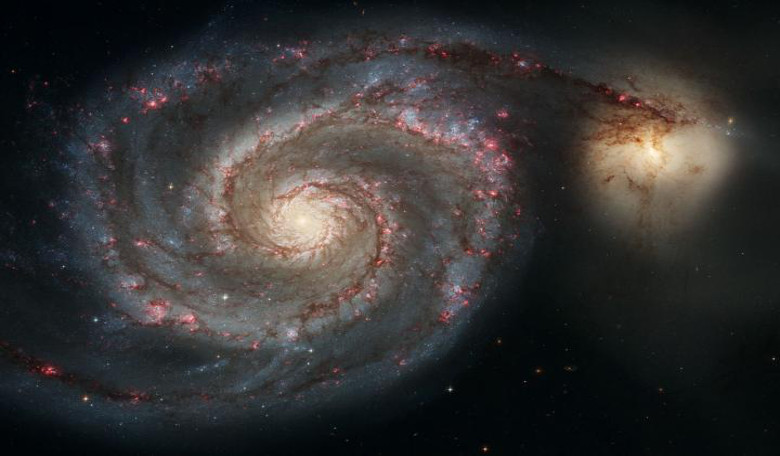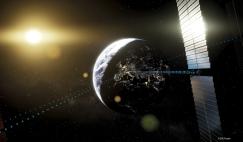Our Solar System is in trouble, but thankfully not for a considerable time yet to come. Nonetheless if you could fast forward two billion years you might see a very different set-up than the one we are accustomed to seeing today. New research led by astrophysicists at Durham University, UK, has predicted that the Large Magellanic Cloud (LMC) might crash into the Milky Way setting off a chain-reaction of events that could result in our Solar System being kicked out into interstellar space.
The Milky Way, like many galaxies of its size, is surrounded by a number of smaller satellite galaxies that generally amble quietly around us for billions of years undisturbed. Two of the more famous satellite galaxies are the Small and Large Magellanic clouds; the latter of which sits at a distance of about 50 kiloparsecs away and is the second or third-closest galaxy to the Milky Way (the jury is not yet out on whether the nearby Canis Major Dwarf Galaxy is closer than the LMC).
The LMC only entered our neighbourhood about 1.5 billion years ago and past studies have indicated that if the speedy galaxy didn’t escape from our galaxy's gravitational pull and shoot off elsewhere, then it would orbit the Milky Way relatively unhindered for many billions of years to come.
However, recent dark matter measurements of the LMC have revealed a bit of a problem. This once dwarf spiral galaxy is actually teeming with the unseen dark stuff – up to twice as much as past calculations suggested – meaning that the LMC is much more massive than previously thought.
Unfortunately for us, this spells doom as the larger mass has resulted in a neighbour that is rapidly losing energy and which has set it on a collision course with the Milky Way.
The catastrophic coming together of the Large Magellanic Cloud with the Milky Way will wreak havoc with our galaxy, said lead author Dr Marius Cautun, a postdoctoral fellow in Durham University's Institute for Computational Cosmology, as the devastating collision will re-awaken our galaxy's dormant black hole thus turning the Milky Way into an 'active galactic nucleus' (AGN) or quasar.
"This phenomenon will generate powerful jets of high energy radiation emanating from just outside the black hole. While this will not affect our Solar System, there is a small chance that we might not escape unscathed from the collision between the two galaxies which could knock us out of the Milky Way and into interstellar space."
AGN are one of the most energetic and powerful phenomena found in the Universe, and they are capable of producing more radiation than the whole of the galaxy they reside in.
While the ensuing collision would light up the skies in a spectacular cosmic firework display for our ancestors to witness (if the Solar System was not cast out into space), according to the researchers, its about time that the Milky Way was involved in galactic merger anyway.
Dr Alis Deason, also at Durham University's Institute for Computational Cosmology, said: "We think that up to now our galaxy has had only a few mergers with very low mass galaxies. This represents very slim pickings when compared to nearby galaxies of the same size as the Milky Way. For example, our nearest neighbour, the Andromeda galaxy, devoured galaxies weighing nearly 30 times more than those consumed by the Milky Way.”
"Therefore, the collision with the Large Magellanic Cloud is long overdue and it is needed to make our galaxy typical."











